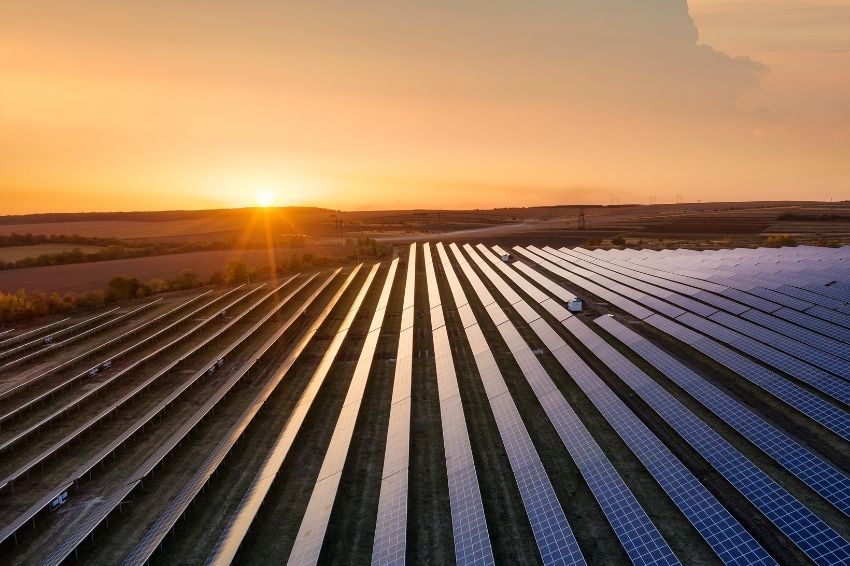Brazil surpassed the historic mark of 9 GW of operational power from solar sources in large plants and small and medium-sized systems installed on roofs, facades and land.
The survey was carried out by ABSOLAR (Brazilian Association of Photovoltaic Solar Energy), based on data from ANEEL (National Electric Energy Agency).
According to the study, the DG (distributed generation) segment has 5.7 GW of installed solar energy power, currently being used in 99.9% of all own generation connections in the country, easily leading the segment.
In the centralized generation segment, Brazil has 3.3 GW of installed power in photovoltaic solar plants, equivalent to 1.9% of the country's electrical matrix. In 2019, solar energy was the most competitive among renewable sources in the two New Energy Auctions, A-4 and A-6, with average prices below US$ 21.00/MWh.
Currently, large solar plants are the seventh largest source of generation in Brazil, with projects in operation in nine Brazilian states, in the Northeast (Bahia, Ceará, Paraíba, Pernambuco, Piauí and Rio Grande do Norte), Southeast (Minas Gerais and São Paulo) and Central-West (Tocantins).
For ABSOLAR, the advancement of solar energy in the country – via auctions for large plants or through own generation in homes, small businesses, rural properties and public buildings – is essential to reduce the so-called “Brazil cost”, with more competitive electrical energy to Brazilians, reducing the occurrence of red flags on the population's electricity bill and diversifying the country's electricity supply.
6th place in the Brazilian electrical matrix
When adding the installed capacities of large plants and own solar energy generation, the photovoltaic source occupies sixth place in the Brazilian electrical matrix, behind hydroelectric, wind, biomass, natural gas thermoelectric and diesel thermoelectric sources and other fossil fuels. .
Furthermore, solar energy already represents more than the sum of the entire installed capacity of coal-fired thermoelectric plants and nuclear plants, which totals 5.6 GW, according to data from ANEEL’s SCG (Superintendence of Concessions and Generation Authorizations), consolidated this Monday (7).
GD Legal Framework
ABSOLAR points out that the creation of a legal framework for own energy generation, as proposed in PL 5829/19 (Bill no. 5,829/2019), authored by federal deputy Silas Câmara and rapporteur by federal deputy Lafayette de Andrada, ongoing in the Chamber of Deputies, is a priority in the current scenario.
According to the association, the approval of this proposal will strengthen socioeconomic and sustainable development during the pandemic period.
According to the CEO of ABSOLAR, Rodrigo Sauaia, the growth of renewable energies will strengthen the diversity and security of Brazil's electrical supply, relieving pressure on water resources, which are increasingly scarce and valuable, as well as reducing the use of fossil thermoelectric plants. , expensive, polluting and responsible for the terrible red flags on Brazilians' electricity bills.
“The three-year technical study, entitled 'Integration of Variable Renewable Sources in Brazil's Electrical Matrix', with the participation of the Ministry of Mines and Energy (MME), Energy Research Company (EPE) and National System Operator (ONS), in partnership with the German government entity Deutsche Gesellschaft für Internationale Zusammenarbeit (GIZ), proved that it is possible to increase the participation of clean, renewable and competitive solar and wind sources by more than four times, with reliability, security and stability of the matrix national electricity”, he explains.
The executive also highlights that this study debunked the old myth that the country would depend on thermoelectric plants to support the growth of renewables.
“On the contrary: in reality, he pointed out that the balance of the system when there are variations in winds and sun is provided in particular by renewable hydroelectric plants, not by fossil thermoelectric plants. Therefore, the evolution to a clean and renewable 100% electrical matrix is possible and depends more on will and political leadership than on technical and economic conditions”, adds Sauaia.
Another point highlighted by the association is the financial return for the country that the GD Legal Framework can provide. “Only in its own energy generation, the solar sector can bring more than R$ 139 billion in investments and generate more than 1 million new jobs in Brazil by 2050, with the legal framework proposed by PL 5829/19”, says Ronaldo Koloszuk, President of the Board of Directors of ABSOLAR
“The benefits of the modality total more than R$ 173 billion in the period, with the reduction of costs in the use of thermoelectric plants and reduction of electrical losses, responsible for tariff increases in the electricity bill and emissions of pollutants and greenhouse gases from the electricity sector ”, he concludes.

















